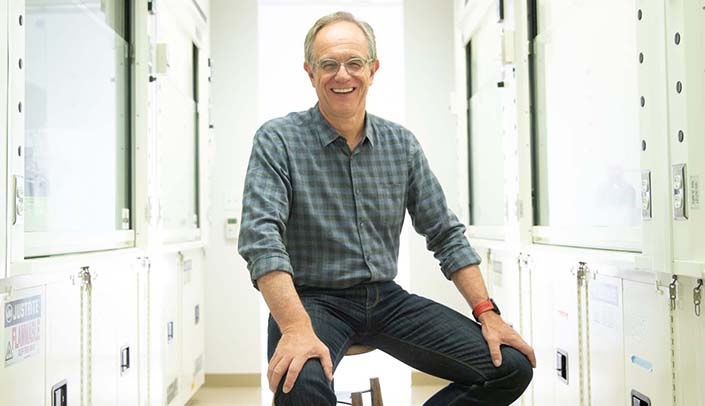Despite the billions of dollars spent on research, and the copious amount of supplements sold (without proven results), the Fountain of Youth is elusive.
But more and more new information is being discovered that may bring humans closer to the secret of living longer. Living healthier is a goal of many scientists.
“We have a bit of a crisis with obesity in this country which is shortening our lifespan,” said Eric Verdin, M.D., CEO and president of the Buck Institute for Research on Aging in Novato, Calif.
An expert on aging, Dr. Verdin was the guest speaker for the Denham Harman, M.D., Ph.D., Lectureship in Biomedical Gerontology on April 5. When his institute opened in 1999, it was the world’s first biomedical research institution devoted solely to research on aging.
His scientific talk focused on the study of the role of mitochondrial sirtuins in aging. Sirtuins are a new family of proteins identified by his lab that affect aging.
At UNMC, he asked the packed room how many wanted to live to be 130 years old. No one raised their hand, but most raised their hands when he asked if they would want to live to 130 if they were in the same health as they are today.
Through research, he and his colleagues at the Buck Institute are trying to understand the process of aging so people can live longer, and stay healthy. He said aging now means getting sick with diseases such as osteoporosis, heart disease, diabetes, cancer and a host of others.
“These diseases pose an enormous burden,” he said. “How do we live longer? Choose your parents well, but 92% of life expectancy is determined by choices and the rest, by your genes.”
As in his own lab, Dr. Verdin said research theories are tested and yield much different results than expected, as well as surprising new information.
He credited Dr. Harman with the free radical theory on aging, saying he and other scientists are discovering new information tied to the role of oxidative stress and the disease process and aging. Oxidative stress plays a key role in Dr. Harman’s theory proposed in the 1950s.
Dr. Harman theorized that free radicals — highly reactive molecules freed in the normal chemical processes — cause aging and disease through their destructive actions in cells and tissues. The theory was first ridiculed and dismissed by many in the scientific community, but gained support in the 1960s with other scientists.
Dr. Harman was nominated six times for the Nobel Prize for his work in this area.
